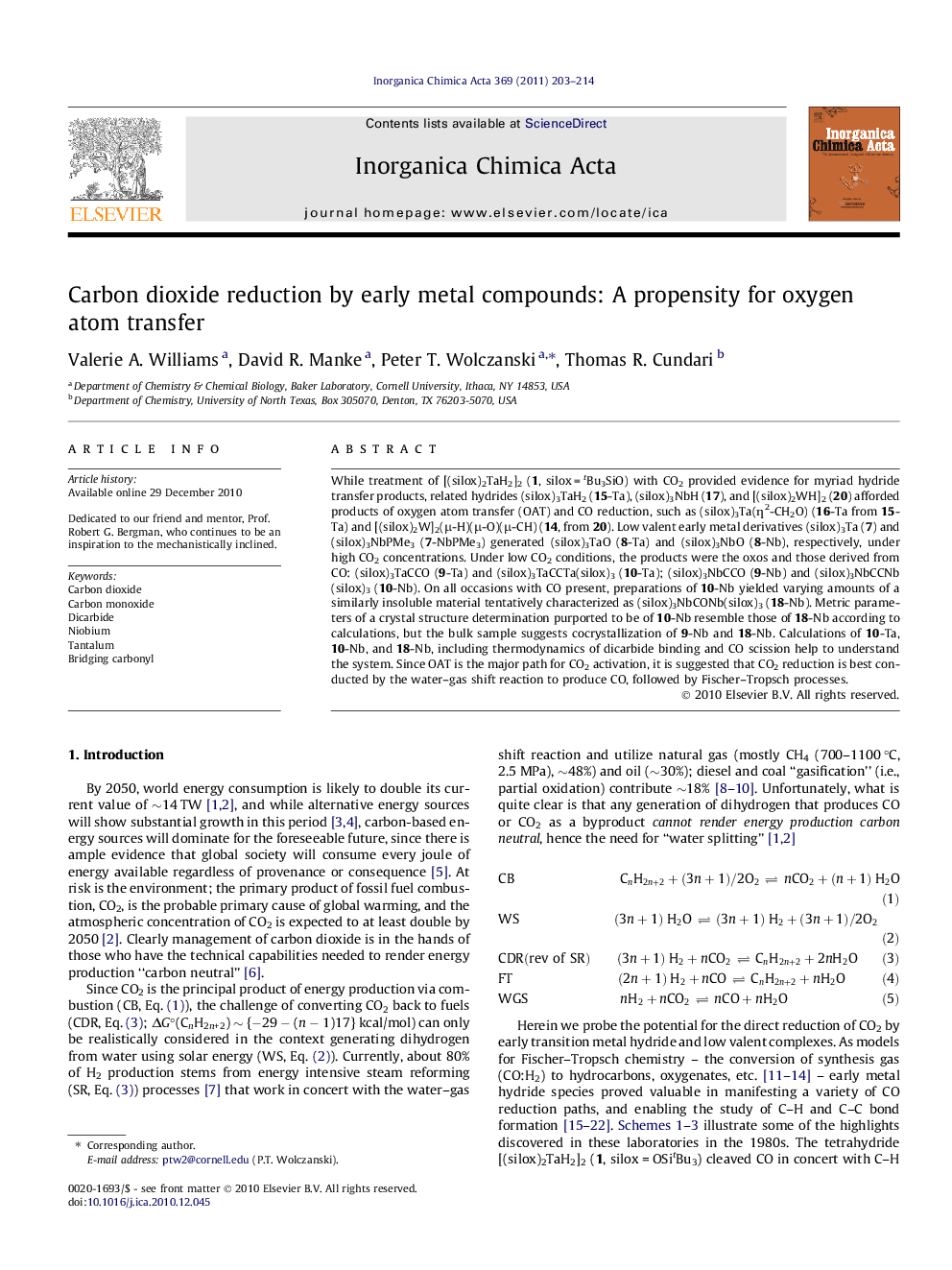| کد مقاله | کد نشریه | سال انتشار | مقاله انگلیسی | نسخه تمام متن |
|---|---|---|---|---|
| 1307680 | 975149 | 2011 | 12 صفحه PDF | دانلود رایگان |

While treatment of [(silox)2TaH2]2 (1, silox = tBu3SiO) with CO2 provided evidence for myriad hydride transfer products, related hydrides (silox)3TaH2 (15-Ta), (silox)3NbH (17), and [(silox)2WH]2 (20) afforded products of oxygen atom transfer (OAT) and CO reduction, such as (silox)3Ta(ƞ2-CH2O) (16-Ta from 15-Ta) and [(silox)2W]2(μ-H)(μ-O)(μ-CH) (14, from 20). Low valent early metal derivatives (silox)3Ta (7) and (silox)3NbPMe3 (7-NbPMe3) generated (silox)3TaO (8-Ta) and (silox)3NbO (8-Nb), respectively, under high CO2 concentrations. Under low CO2 conditions, the products were the oxos and those derived from CO: (silox)3TaCCO (9-Ta) and (silox)3TaCCTa(silox)3 (10-Ta); (silox)3NbCCO (9-Nb) and (silox)3NbCCNb(silox)3 (10-Nb). On all occasions with CO present, preparations of 10-Nb yielded varying amounts of a similarly insoluble material tentatively characterized as (silox)3NbCONb(silox)3 (18-Nb). Metric parameters of a crystal structure determination purported to be of 10-Nb resemble those of 18-Nb according to calculations, but the bulk sample suggests cocrystallization of 9-Nb and 18-Nb. Calculations of 10-Ta, 10-Nb, and 18-Nb, including thermodynamics of dicarbide binding and CO scission help to understand the system. Since OAT is the major path for CO2 activation, it is suggested that CO2 reduction is best conducted by the water–gas shift reaction to produce CO, followed by Fischer–Tropsch processes.
Treatment of various hydridic and low valent early transition metal species such as (silox)3TaH2 (15-Ta, silox = tBu3SiO), (silox)3NbH (17), [(silox)2WH]2 (20), (silox)3Ta (7), and (silox)3NbPMe3 (7-NbPMe3) with CO2 afforded products of oxygen atom transfer (OAT) and subsequent CO reduction, as shown below for 7-NbPMe3.Figure optionsDownload as PowerPoint slideResearch highlights
► Treatments of hydridic and low valent early transition metal species with CO2 are given.
► Oxygen atom transfer (OAT) is the predominant path of reactivity with CO2.
► Subsequent reactions with CO gave ketenylidene, dicarbide and bridging CO, i.e., oxycarbyne, products.
► The water–gas shift reaction and Fischer–Tropsch chemistry is superior to the direct reduction of CO2.
Journal: Inorganica Chimica Acta - Volume 369, Issue 1, 15 April 2011, Pages 203–214